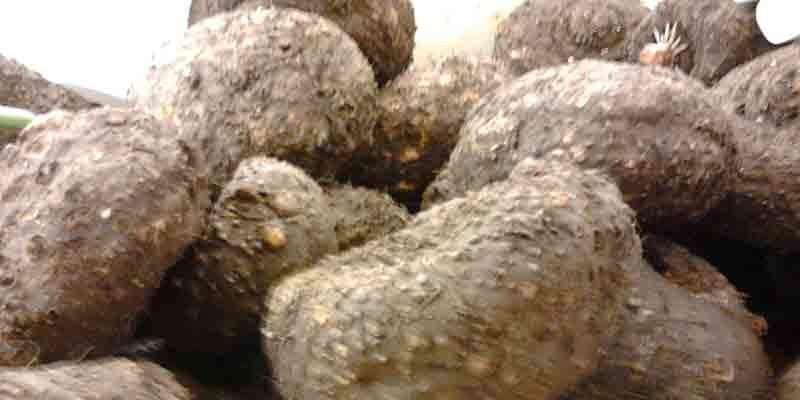It is a tropical tuber crop cultivated in India. The tubers are consumed as a vegetable after through cooking and chips. Tender stems and yam leaves are consumed as vegetables. It is mainly cultivated in Uttarakhand, Chhattisgarh, Bihar, West Bengal, Karnataka, Andhra Pradesh, Maharashtra, and Orrisa. It is good source of protein, carbohydrates, and omega 3 fatty acid.
Soil required: A rich red-loamy soil with a pH range of 5.5-7.0 is preferred. It is a tropical and subtropical crop. It requires well-distributed rainfall with humid and warm weather during the vegetative phase and cool and dry weather during the corm development period.
Varieties:
Gajendra: It is Developed at APAU, Hyderabad. It matures in 200-215 days and gives an average yield of 17-21 tons per acre.
Sree Padma: It is developed at CTCRI Thiruvananthapuram. It gives an average yield of 17 ton per acre.
Land preparation and sowing:
It is sown in the month of February so that corm setts would sprout with the pre-monsoon showers. April – May is the planting season. The spacing of 75×75 cm should be maintained. Planting is done 20-25cm deep in pits. The corms are sown manually, deep in the pits of size 60cm x 60cm x 45cm.
Seed rate: Seed rate is used according to corm weight. The seed rate for 250gm corms is 16 quintal per acre and for 500gm 30 quintal seed rate is required. For seed treatment dip the tubers in 2% solution of Bavistin for 30 minutes. It protects the tubers from the soil borne diseases.
Fertilizers and weed control:
Apply 10-12 ton of well rotten FYM during field preparation. Apply a full dose of phosphorus and half dose of Nitrogen and potash after 45 days of sowing. The remaining dose should be applied one month after the first dose. To make the field weed free, 1-2 hoeing’s and earthing up should be done after each hoeing.
Irrigation: It is mostly raised as a rainfed crop. However, irrigation is required when monsoon fails, where it is grown on a large scale. Water stagnation is harmful to the crop. Wherever irrigation facility is available, irrigation can be given once a week.
Harvesting can be done on 8 months after planting and particularly in the month of January – February. Drying of stem and leaves indicates the harvesting stage in elephant yam. For good marketing, harvesting can be done from 6 months.
For more information about Agriculture and Livestock, download Apni Kheti app – Android, iPhone





